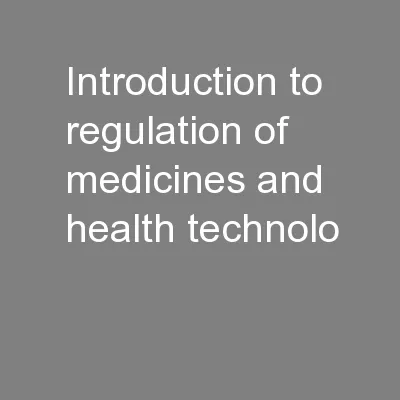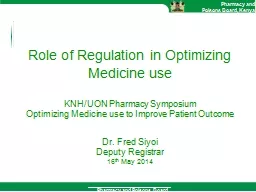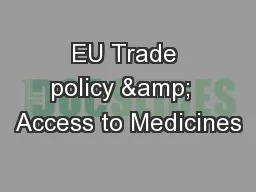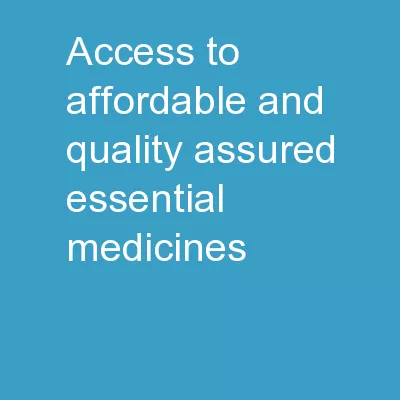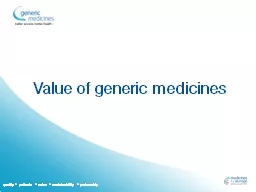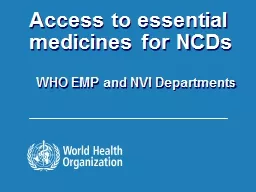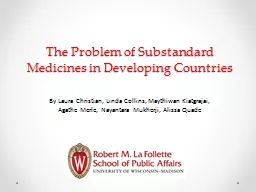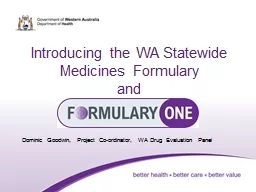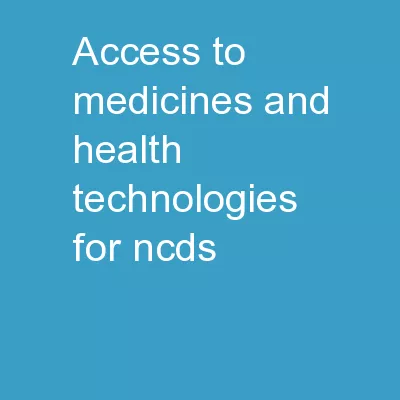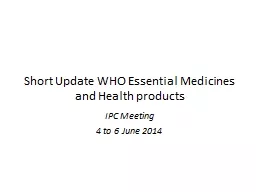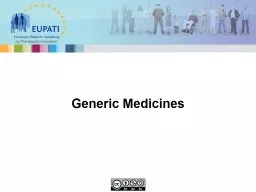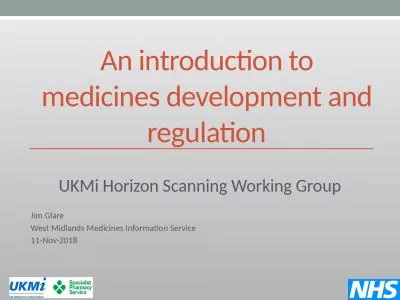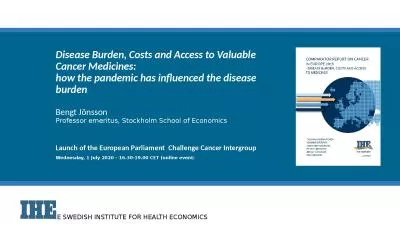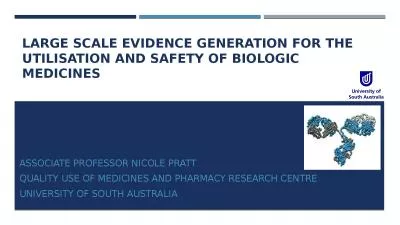PPT-Introduction to regulation of medicines and health technolo
Author : pamella-moone | Published Date : 2016-03-24
Global context of drug regulation Dr Lembit Rägo Coordinator Quality Assurance and Safety Medicines Essential Medicines and Health Products World Health Organization
Presentation Embed Code
Download Presentation
Download Presentation The PPT/PDF document "Introduction to regulation of medicines ..." is the property of its rightful owner. Permission is granted to download and print the materials on this website for personal, non-commercial use only, and to display it on your personal computer provided you do not modify the materials and that you retain all copyright notices contained in the materials. By downloading content from our website, you accept the terms of this agreement.
Introduction to regulation of medicines and health technolo: Transcript
Download Rules Of Document
"Introduction to regulation of medicines and health technolo"The content belongs to its owner. You may download and print it for personal use, without modification, and keep all copyright notices. By downloading, you agree to these terms.
Related Documents

